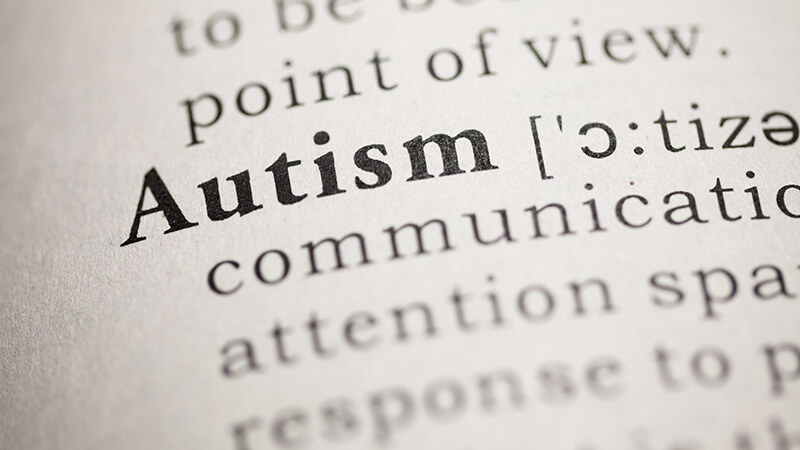The journey to independence is a significant milestone for any adult, but for individuals on the autism spectrum, it often comes with unique challenges and barriers. Autism Spectrum Disorder (ASD) affects millions of adults worldwide, many of whom face difficulties in achieving independent living. Understanding the percent of autistic adults living independently sheds light on their progress, the resources they need, and the support systems that can help them thrive.
This article explores seven compelling statistics that illustrate the strides in empowering autistic adults to live independently. These numbers not only highlight areas for improvement but also celebrate the progress and potential of individuals on the autism spectrum.

1. Prevalence of Autism Among Adults
Autism affects millions of adults in the United States, reflecting its impact on a diverse range of individuals. According to the Centers for Disease Control and Prevention (CDC), approximately 2.21% of adults in the U.S.—or about 5.4 million people—are diagnosed with ASD. This prevalence underscores the importance of addressing the unique needs of autistic adults, especially as they transition into independent living.
Understanding this demographic is a crucial step toward creating support systems that foster independence and inclusion for adults on the autism spectrum.
2. Only 19% of Young Adults with Autism Live Independently
Research conducted by Drexel University highlights that just one in five or 20% of young adults on the autism spectrum have lived independently (without supervision) in their early 20s. This statistic is a stark reminder of the significant barriers many autistic individuals face when striving for autonomy.
In contrast, 87% of autistic young adults live with their parents during this stage, relying on family support. These findings reveal the critical role families play in supporting their loved ones and the need for broader systems to help individuals transition to independence.
3. Comparison to Other Disabilities
When compared to peers with other disabilities, autistic young adults have the lowest rates of independent living. For example:
- 34% of individuals with intellectual disabilities have lived independently.
- 62% of individuals with learning disabilities have achieved independent living.
- Only 19% of individuals with autism have done the same.
This discrepancy emphasizes the unique challenges faced by autistic adults, from navigating social complexities to managing daily responsibilities. Tailored interventions are essential to bridge this gap and ensure that autistic adults are provided with the tools they need to succeed.
4. Factors That Influence Independent Living
Several factors significantly impact the likelihood of an autistic adult living independently. These include:
- Household Income: Nearly 40% of young adults from households earning over $75,000 annually have lived independently, compared to just 6% from households earning less than $25,000.
- Race and Ethnicity: Disparities exist among racial and ethnic groups. For example, white young adults have higher rates of independent living (27%) compared to Black and Hispanic young adults, who reported 0% in one study sample.
- Communication Skills: Individuals with higher conversational abilities are more likely to live independently. About 45% of those with advanced communication skills achieve this milestone, compared to none with lower conversation abilities.
These findings highlight the importance of equitable access to resources and tailored interventions that address individual needs.
5. Service Gaps for Autistic Adults
One of the most significant barriers to independent living is the lack of services available to autistic adults. A report by the A.J. Drexel Autism Institute found that 26% of autistic young adults received no services to support employment, education, or independent living in their early 20s.
Without these crucial resources, many adults on the autism spectrum struggle to develop the skills and confidence necessary for independent living. Expanding access to services, especially during the critical transition from adolescence to adulthood, is vital.
6. Housing Options for Autistic Adults
A variety of housing options are available to autistic adults, each designed to meet different levels of independence and support needs. Common options include:
- Living with Family: The most common arrangement, where individuals remain in the family home.
- Supported Living: Adults live independently but receive periodic support for tasks such as cooking, budgeting, or transportation.
- Group Homes: Structured environments that provide constant support while fostering community living.
- Independent Living: Fully autonomous living arrangements for those who can manage daily responsibilities on their own.
Choosing the right housing option depends on the individual’s abilities and preferences. Expanding access to affordable, supportive housing is essential to increasing the percentage of autistic adults who live independently.
7. Programs and Initiatives Driving Change
The good news is that efforts to support independent living for autistic adults are gaining momentum. Programs focused on vocational training, social skills development, and community integration are making a tangible difference.
For example:
- Vocational Training: Initiatives that teach job-related skills help autistic adults secure employment, a key factor in achieving independence.
- Social Skills Programs: Programs designed to improve communication and social interaction empower individuals to navigate relationships and responsibilities.
- Community Living Programs: These initiatives connect autistic adults with resources such as transportation, financial management, and healthcare, enabling them to live independently.
The growing recognition of these needs is paving the way for greater independence and self-sufficiency among autistic adults.
Looking Ahead: The Path to Greater Independence

While challenges remain, progress in supporting independent living for autistic adults is evident. Awareness is increasing, and innovative programs are emerging to address the unique needs of this population. To further uplift the percentage of autistic adults living independently, society must focus on:
- Expanding access to services and resources, particularly for underserved communities.
- Promoting inclusive policies that address housing, education, and employment for autistic individuals.
- Raising awareness of the capabilities and contributions of autistic adults, fostering a more inclusive society.
With continued investment and commitment, the vision of a world where more autistic adults achieve independence can become a reality.
Conclusion
The journey toward greater independence for autistic adults is a story of progress, perseverance, and potential. While only a fraction of autistic adults currently live independently, the growing awareness, targeted support systems, and inclusive programs are paving the way for brighter futures. By addressing barriers such as service gaps, economic disparities, and access to affordable housing, society can empower more individuals on the autism spectrum to lead fulfilling and self-sufficient lives.
This is not just a matter of providing resources—it’s about fostering understanding, breaking down societal stigmas, and creating opportunities that recognize the unique strengths of autistic individuals. The progress so far is a testament to the impact of advocacy, community support, and innovation, but there is still work to be done to ensure every autistic adult has the tools they need to thrive.
How New Direction for Young Adults Can Help You
At New Direction for Young Adults, we specialize in empowering autistic individuals to achieve greater independence and fulfillment. Our programs are designed to address the unique challenges faced by young adults on the autism spectrum as they transition into adulthood. Through tailored services such as life skills training, vocational development, and social integration programs, we provide the support needed to build confidence and navigate the path to independent living.
Whether you’re a family member seeking resources or an autistic adult ready to take the next step, New Direction for Young Adults is here to guide you every step of the way. Together, we can create a plan that meets your individual needs and helps you reach your full potential.



